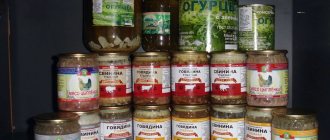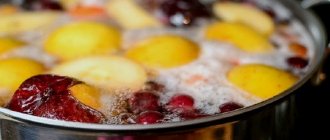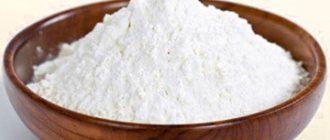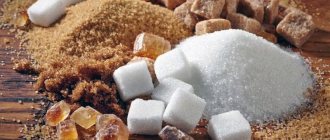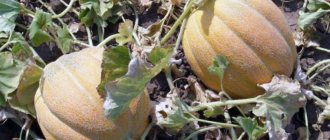Jamon is dry-cured pork meat. It belongs to traditional Spanish dishes. You can store jamon at home only if it is of high quality and fresh. When buying it in a store, you should carefully check that there is no water or mucus on the surface. One of the indicators of quality is the presence of a thin film of mold on the shell.
How to choose
Before organizing the storage of jamon, you should purchase it. Storage is possible only if the product is fresh and of high quality. Therefore, when purchasing it, you need to make sure that:
- there is no mucus or moisture on the surface;
- at temperatures above +18°C shine and a bright aroma appear;
- a thin film of mold is visible on the shell (a quality indicator).
How to store jamon at home depends on its type. If the product is purchased as a whole piece, it can be stored for up to 12 months.
Jamon on the bone should be stored at a temperature no higher than +18°C (cellar, basement). But if the product is purchased already sliced, it must be kept at a temperature no higher than +5°C (refrigerator). Otherwise, the shelf life of jamon is significantly reduced.
Option with lamb
Having figured out how to store jamon at home, you can see an unusual recipe for preparing this delicacy. To make a unique snack on your own that can compete worthy with store-bought sausages, you will need:
- 8 kg salt.
- Leg of lamb weighing about 2 kg.
Pour grams of salt onto a baking sheet lined with foil. Place a leg of lamb on top. All this is sprinkled with another 3.5 kg of salt and placed in any cool place for a day.
Then the leg is shaken off and placed in a clean container. Another 2 kg of salt is poured there. All this is left for two days, and then shaken and salted again. After a week, the leg of lamb is cleaned again and hung in a well-ventilated room. After seven days, the darkened jamon, the shelf life of which depends on the conditions in which it is stored, is put in the refrigerator.
Under what conditions should it be stored?
Whole pieces of this product should be kept out of the refrigerator. The storage temperature for jamon should be between +15°C and +20°C. In a warmer place, the meat may begin to rot, and in the cold, it will lose its taste.
During storage, it is undesirable to use any packaging (foil, film, paper). Insufficient air will negatively affect the quality of the product. You also need to remove the store packaging from it, and then hang it in a cool room or on a balcony at normal temperature.
You should not store bone-in jamon next to foods that have a strong odor.
If mold appears, the meat is treated with olive oil, and it should absolutely not be frozen. Although the product will last quite a long time, its taste will be irretrievably lost.
Something about preparing and choosing a delicacy
The process of preparing this miracle of gastronomy consists of a very simple operation, namely, adding salt to raw meat, i.e., the hind leg of pork. Moreover, a large amount of salt is used to achieve maximum dehydration of the meat. How long does it take for drying to turn out as it should? Its duration depends on the mass of raw materials and ambient temperature, on average one day per kilogram of product.
We recommend: How to properly store beets? storage methods
Drying lasts from 6 to 36 months and depends on the weight of the leg, as well as climatic conditions in specific provinces of Spain. It begins, as a rule, at the end of winter or early spring, so that the process lasts throughout the summer until its end with a gradual increase and the same gradual decrease in ambient temperature. At the beginning of autumn, the jamon is transferred to lower and cool rooms with a temperature of +8...+10 °C, where it spends about another year, undergoing the drying process. At the same time, the delicacy acquires that unique taste, aroma and structure for which it is known and appreciated in many countries. The drying process takes place in two stages:
• ripening in cellars in a suspended state; • product readiness test.
An experienced expert will help you choose this coveted high-quality meat delicacy, as well as the personal preferences of lovers of this delicious representative of the gastronomic culture of Spain.
On the bone
Buying pulled pork on the bone, as opposed to sliced, is more cost effective. If stored properly, it can maintain its quality for a very long time.
Storing jamon on the bone should be suspended with the hoof up at a temperature of +15°C -+20°C.
It is very important that the storage temperature of the jamon is constant. Sudden changes lead to loss of product quality. In this case, it should be treated with animal fat or olive oil.
Pork purchased in vacuum packaging must be kept at a temperature of +2°C -+10°C. In this case, the fresh cut area should be immediately treated with fat to create a protective film. In such conditions, the shelf life of jamon will be 3 - 4 months. And if the storage conditions of the product are unsuitable, you will need to constantly remove rotten areas.
Diet jamon
If this dish is too fatty for you, or you only have a week to prepare this delicacy, then you can use a dietary recipe that will suit the taste of any gourmet.
Ingredients needed to make jamon:
- Chicken breast - half a kilo.
- Sea salt – 300 grams.
- Kefir – 250 milliliters.
Homemade recipe:
- The chicken must first be soaked in kefir for several hours so that it releases additional juice and, soaked in sour milk, becomes softer.
- After soaking and washing the chicken breast, rub it with sea salt, put it in a container and put it in the refrigerator for 3 days.
- After that, you need to hang the meat in the kitchen at room temperature for 4 days. During this time, the meat will dry completely and be ready to eat.
Please note that the jamon must be cut correctly. This is best done with the help of a special device - a cortadora, which meat specialists use to cut dried pork. The master produces perfect slices using sharp, elongated blades and a jamonera (a stand for meat that supports it during slicing).
A properly sliced delicacy should be thin, almost transparent, showing the entire texture of the dish. This is necessary so that the pork simply melts in your mouth, leaving a pleasant aftertaste. Well, you can see what a properly prepared delicacy looks like using special photos and video materials.
Storing cuttings
It is best to use cut dried pork immediately without resorting to long-term storage. If there is still a need to store sliced jamon, place it on a dish and wrap it in a damp cloth or foil, trying to do this so that the packaging and the meat do not come into contact.
The shelf life of sliced jamon in the refrigerator is 10 - 12 hours. However, it is strictly forbidden to wrap it in cling film or place it in a tightly closed plastic container.
Before eating, the meat is kept warm for about 10 minutes so that it acquires a richer taste and aroma. An indicator of proper storage of cuttings will be the shine on its surface.
Technology
Jamon is prepared only from the hind leg of pork. It is first prepared - a certain amount of fat is cut off, but in such a way that the meat can be well salted and not dry out in the future. After the ham is salted. Experts in this regard also have several secrets of proper salting, but they are kept in the strictest confidence. After all, jamon is a dish with worldwide popularity.
After salting, the legs are sent to dry in a ventilated cellar, tied to the ceiling by the hoof. At the same time, temperature and humidity conditions are strictly observed. If everything is done correctly, after a while a fungus appears on the meat. He also takes an active part in the ripening of the delicacy. Periodically, the excess is washed off and the future jamon is dried again.
The recipe for this delicacy is by no means quick. Everything will take at least a year, all processes must be carefully followed. The readiness of the jamon is determined by a specially trained person - a maestro-bodeguero. The degree of readiness corresponds to the aging period; the meat should acquire a certain aroma of jamon. When the hams are ready, they are put up for sale.
Vacuum storage
If the jamon is boneless, its quality in vacuum packaging will not change even after 12 months. But after opening, the product can last no more than 7 days.
Vacuum ham is purchased only when you plan to use it immediately, without resorting to storage. Practice shows that this is pointless. But even during short-term storage, cut meat should be treated with olive oil.
A little history about the appearance of jamon
Today, jamon is prepared in almost all elite restaurants in the world, and it is simply impossible to imagine a Spanish establishment without this dish on the menu. This delicacy has a very long history. No one can answer unequivocally how the technology for its preparation appeared. According to the official point of view, the technology for preparing jamon was invented by Europeans who tried to achieve long-term preservation of products.
There is another opinion regarding the origin of the technology of salting meat. According to folk legend, Spanish jamon appeared after the Spaniards caught a piglet from a sea river. People say that during its stay in the water, the pig was heavily saturated with salt and after it was cooked, people felt the wonderful taste of the meat. This is how jamon was born.
Initially, this dish was prepared only for the highest nobility, as it was considered a delicacy. Ham decorated the tables of Roman military commanders, legionnaires, and even the Roman emperor. It was believed that every military man should eat this delicacy in order to always remain strong.
The Spaniards began actively exporting the recipe for this dish in the 18th century. Gourmets from all over the world appreciate the exquisite taste of jamon and eat it with great pleasure. The good thing is that the recipe for its preparation was practically not changed and has survived to this day in its original version. Therefore, when we eat jamon, we can be sure that we are eating one of the oldest dishes in the world.
And now we will get acquainted with how jamon is prepared.
Each product has its own story. Ham is no exception. This product was invented approximately 300 years ago.
In those distant times, Spanish peasants began to dry and salt meat to preserve meat. It was stored for a long time, and when there was no fresh meat, they took out dried meat and ate it. The quality and taste of the product depended on the conditions of feeding and keeping the pigs, as well as on the degree and conditions of aging of the meat. For example, some fed pigs with acorns, others with grain, vegetables, etc. Accordingly, each owner got his own meat.
Now such meat is produced almost throughout Spain. However, for each locality there is a kind of quality mark that guarantees that the product produced here is made according to all the rules and according to the standard of that territory.
Until the 18th century, jamon was only a Spanish dish. But then they started exporting it. It was brought to our country only in the 19th century as an overseas treat. Even then it was expensive, and therefore was present only in merchant houses and served on major holidays.
Thus, real jamon is a product, the taste and quality of which depends not only on the method of salting the pork, but also on the special breeds of pigs and their feeding conditions. Thus, the mountain pastures to which pigs are driven are rich not so much in grass as in oak forests, and therefore in a large number of acorns. Which contain a lot of oleic acids and also have a sweetish taste.
Storing prosciutto
Prosciutto (translated as ham) is ham treated with salt. This product contains no other additives and consists solely of meat and salt, just like jamon. Prosciutto is native to Parma, Italy. It uses the ham of a pig that was fed exclusively corn and fruit.
Storing prosciutto is not much different from jamon, but nevertheless, it has its own rules. The cut is covered with its own skin, and if it was accidentally thrown away, with oiled parchment.
Unlike jamon, you need to cut the prosciutto a little at a time when serving it, adding more if necessary. And the slices should not touch each other in order to preserve the taste and aromatic qualities of the product as much as possible.
The portion of dried meat remaining after the meal is placed in the cold, but for no more than 12 hours. The product is first wrapped in a damp cloth without any utensils.
Prosciutto meat is less susceptible to freezing temperatures. In case of emergency, it can be frozen, but the quality of the product after defrosting will be quite questionable.
Subtleties of production
Having figured out what jamon is and what kind of meat it is, you need to find out exactly how it is made. The hind leg of the pig is freed from excess fat, covered with sea salt and kept for two weeks at a temperature of 0 ... 8 ° C.
Then it is painstakingly washed and hung in a vertical position in a humidified chamber to dry and equalize the degree of salting. The duration of this process is from 1 to 2 months. In the next step, the vertically suspended hams are dried and left to ripen.
The readiness of the product is inspected using a beef bone needle.
Storage Features
- Storage of jamon (whole drumstick) should occur at a temperature of +15 ° C - + 20 ° C. If meat is purchased as slices, storage time is significantly reduced.
- Freezing dried meat causes the moisture in the tissues to crystallize. The structure of the product will be damaged beyond repair. Therefore, it is possible to properly store jamon after defrosting in natural conditions for several hours.
- Jamon can be transported in cling film. But in such conditions it will deteriorate within 24 hours.
- If yellow fat appears on the surface of the meat, this is an indicator of improper storage. It is best to cut off the damaged areas with a knife and try to avoid consuming this product.
Fans of pulled pork shouldn't waste their money. In any case, this product is quite expensive. Read how to store jamon at home so you don’t regret wasting money.
Brief conclusions about the delicacy product
So, we looked at some features of one of the little-known national products - jamon.
Firstly, it is an exquisite Spanish delicacy. If you are a foodie, then this product is for you. But even just trying it is still worth it.
Secondly, in addition to its wonderful taste, it has a number of properties that make it a healthy product. So in Spain itself, it is considered a dietary product and is even recommended for consumption by people not only of different health levels, but also of different ages.
This all makes jamon possible to use in various diets. It goes without saying that it should be consumed in moderation. Jamon has a fairly high digestibility and a strong effect on metabolic processes. And this is fundamental in any diet.
One of the famous doctors in Spain, Gregorio Marañon, once wrote about this. He said that the rich content of vitamins, minerals, etc. in jamon makes it practically a medicine. But consuming it in large quantities is not recommended for those who suffer from intestinal diseases. Contraindications may include cardiovascular diseases, as well as hypertension and atherosclerosis.



